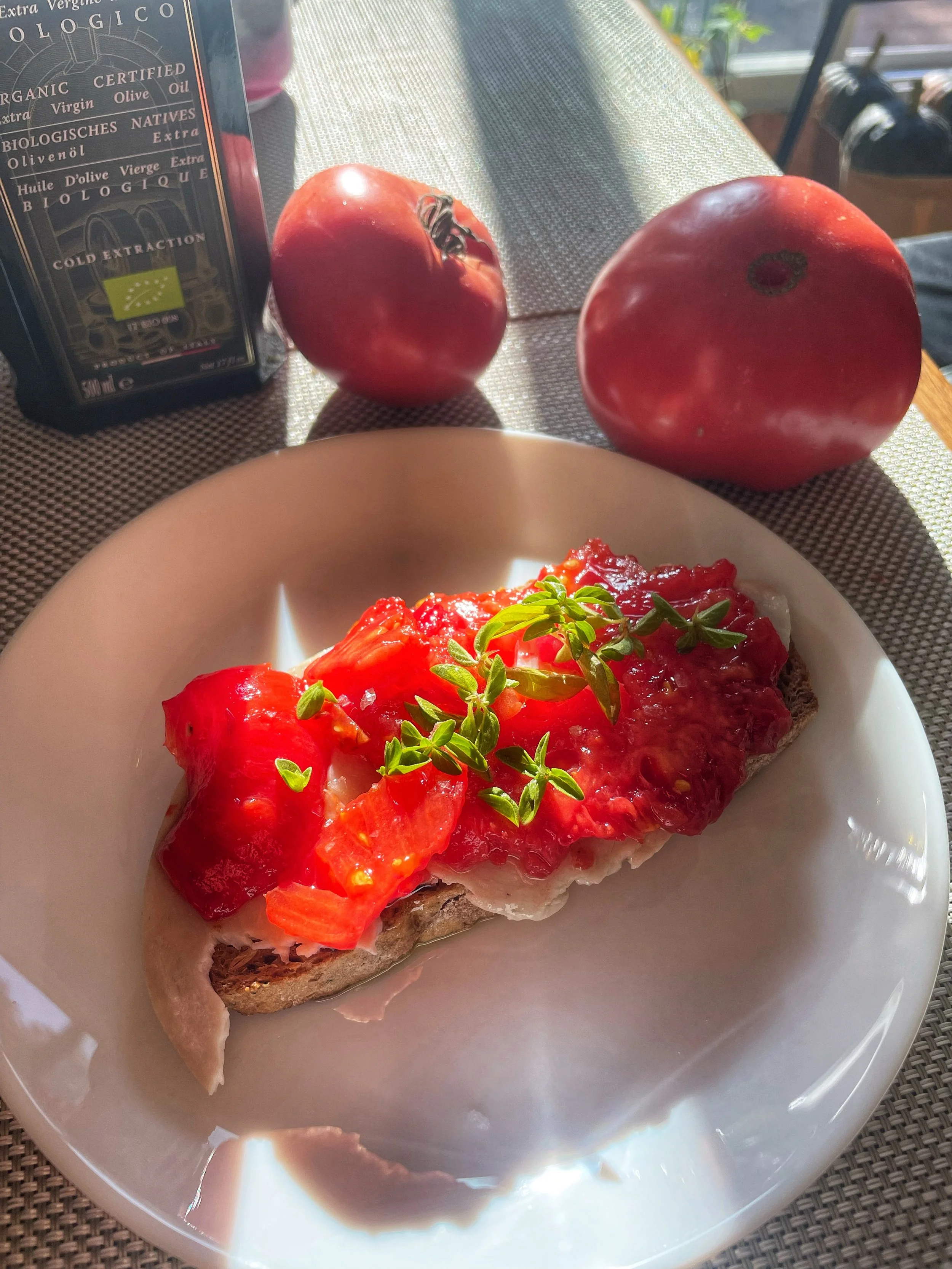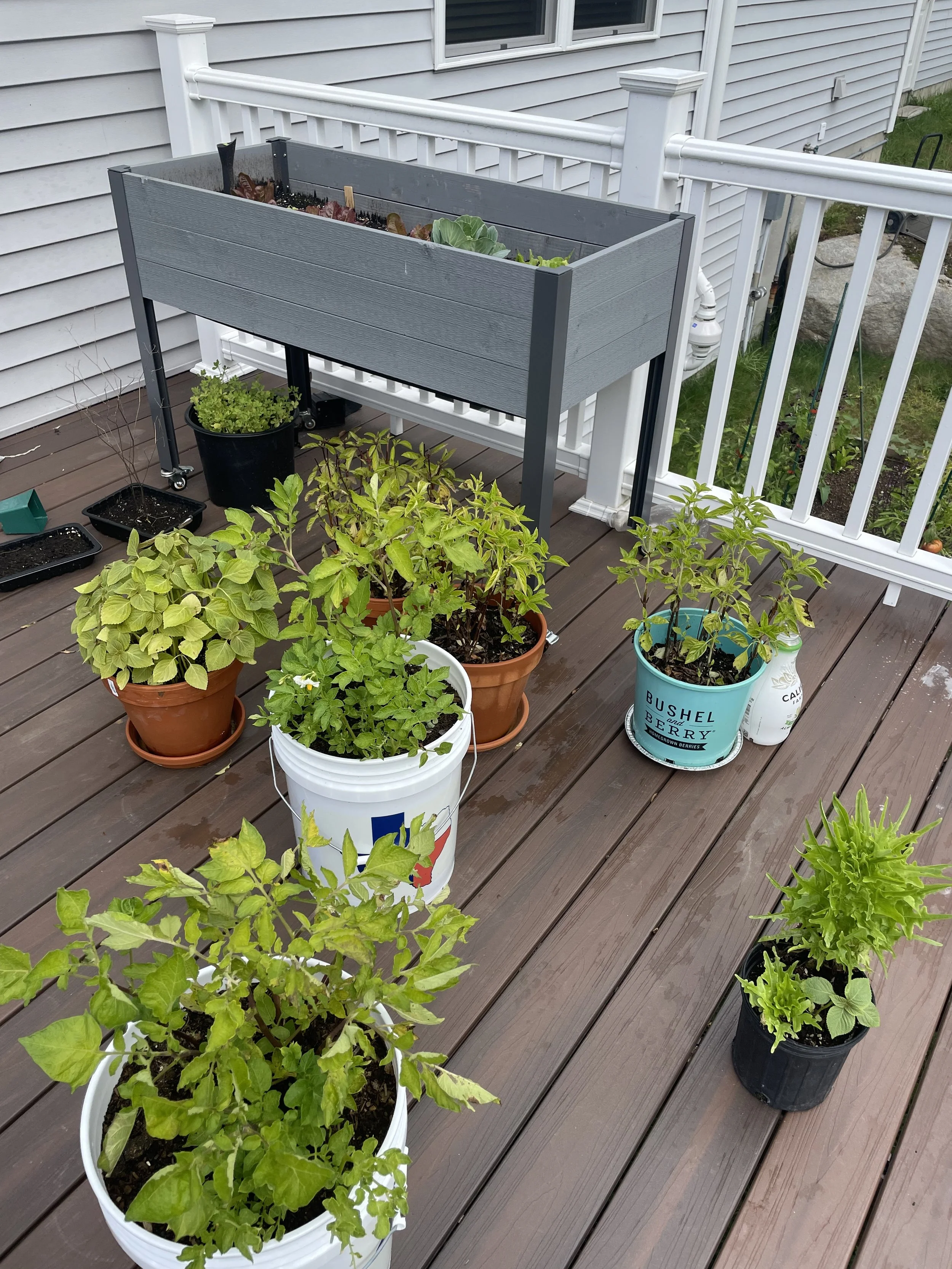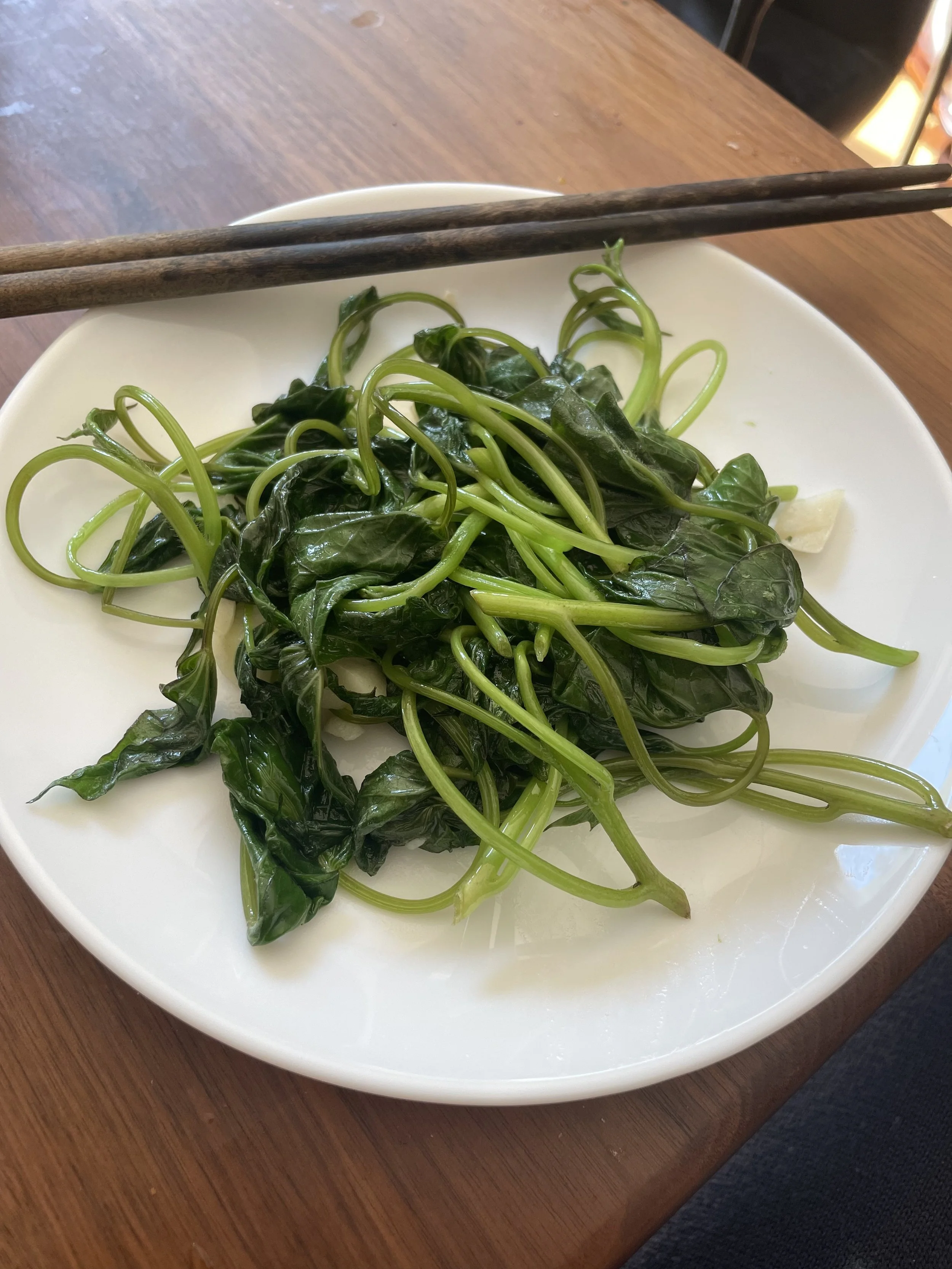Learning to grow, growing to learn
Our September harvest
This year was our year of experimentation to see if these two former urbanites with black thumbs could actually garden, and learn to grow food to supplement our dishes, help decrease our impact on our strained food system, and (attempt to) decrease our carbon footprint.
Yes, prior to this year, my poor poinsettias and baby pines trees have never made it even close to surviving till Christmas, and every potted herb have resulted in wilt so quickly, I’ve never gotten to harvest a single leaf for my dishes before they’re done. The only thing I’m incredibly good at keeping alive (for longer) are cut flowers, as long as they don’t come growing in a pot of dirt.
Why now? Having gone through the supply chain disruptions since 2020, coupled with rising prices, drop in produce quality everywhere (outside of local farmers markets, which we’re incredibly grateful for), and watching with concern as weather patterns disrupt crops everywhere globally, we decided the best way we can help is to lessen our own strain on the system and if we can inspire friends, family, and others to do the same (if we succeed), this will help make our food system more resilient.
For context, my family has owned an avocado orchard with some grapefruit, persimmon, oranges, macadamia nut and other fruits for several decades. So phrasing the recent changes as “weather pattern disruptions” is the mildest way I can describe the chaos in regards to climate impact on farming, As with other farmers we know, whether to sell the farm or not has become a regular topic of discussion as rising costs push many small farmers out of business, and we have sadly seen many farms close down or change hands over the past few years.
So this year, after watching a whole winter full of raised garden bed DIY (we ended up with cement edge bricks from home depot and slotted wood boards in-between the bricks to make our own raised beds), and armed with way too many packs of seeds (because I dreamt of devouring everything), we set out to try our hand at gardening.
Such a luxury to have Brandywine tomato toast with fresh marjoram every month for over a month!
It’s definitely been an adventure, and here’s a summary of what went well (and learnings!) that hopefully will help others who might be thinking of trying their hand at gardening :
Soil quality will determine your success or failure. Almost everything grew beautifully in the rich fertile living soil we purchased locally from Vermont. Good soil makes all the difference. We had many more failures in our commercially purchased soil, even after additional fertilizing.
Learn which plants thrive in which months, and make sure you harvest in time. Napa cabbage grew beautifully in the cold spring, and had no issues with a damp “self-watering” planter. But come summer, and it was wilted and devoured by bugs.
Start seeds early indoors if you live in cold climates. Starting seeds indoors in April gave our tomatoes an early start to the season. We tried both starting from seed trays and starting from aero garden, and the latter definitely grew things much quicker, but also gave us weaker seedlings, though we may have needed to transplant them faster than we did. (The weather was still too cold)
You never know what might thrive. Play a variety. We planted a lot of Brandywine tomato seedings (12) expecting a bunch to die off, but they all thrived and grew beautifully. (After eating fresh Brandywine tomatoes daily for breakfast for a month and a half, we might need even more of these plants next year.) We knew our climate was perfect for cold weather asian vegetables - but nothing, not a thing, grew to a healthy stage, except for Napa cabbage. You never know what will thrive - so try a variety!
If you don’t get your seeds planted in time, it’s okay to buy seedlings. We noticed no difference between the thyme we started from seed and store bought seedlings, and both are still thriving indoors in the winter.
The best fertilizer comes from nature. Rain water collected on stormy (lightening) days (yes, those contain nitrogen, look it up - it’s kind of cool), compost, worms, cover crops etc. all help your plant grow beautiful, and are extremely cost effective and replenish-able.
One can never plant enough Marjoram (or fill in your favorite herb here). They’re delicious used on tomatoes, eggs, sandwiches, meat dishes, chickpeas, soups, everything.
Harvest your zucchinis frequently, before they grow ginormous and kill the plant
Tend to your garden but don’t fuss with the plant too much. Don’t get too curious around pumpkin flowers like we did. You might knock them off and not get a pumpkin from that flower (we collectively knocked off 3-4 of them, and this is off of a single plant!).
Start with the easy harvests. Your sweet potato/yam might not grow, but yam leaves are delicious! (and grows well from sprouted pantry yam.) There are many plants where even if you don’t end up getting the result you wanted… there are edible parts along the way.
Seeds don’t have to come from a store. Don’t throw away sprouted potatoes. Plant them in a 5-gallon bucket, and you’ll have lots more potatoes by the end of fall. This applies to onions, sweet potatoes, carrot tops, the list goes on.
Chemicals aren’t the only solution. For example, if you’re just starting out with a small garden, pest control is easy. Just knock/pick them off. Done. Same with getting rid weeds, although try to remember what you planted else you might pull out some green onions along with the weeds like we did. Companion plants (that ward off pests), and natural remedies (copper, neem oil) all help as well.
Not everything will thrive in the same soil condition. Napa cabbage and lettuce love our planter, but okra likes and dry and does NOT like damp self-watering planters that over water them. (Their flowers and fruit will simply fall off…)
Our patio plants definitely got a lot less insects bothering them
We had SO much fun gardening this year, and in some ways, the collaboration, learning, and celebration with each small harvest of fresh home-grown produce has helped strengthen and build back up our personal relationship as well and made the bond stronger, which in quite grateful for.
Sautéed tender sweet potato leaves
We got even more seeds planned for next years, focused around cold hardy varieties and flowers to deter pests. My goal in 2023 is to see if I can extend the growing season next year in the Spring/Fall with these varieties and plan out some successive planting! The following year (or one of these years), I’d love to figure out how, and what it would take to get a geothermal warmed greenhouse going so we can garden all 4 season.
As you can see, this hobby has definitely extended beyond a season in 2022 (we grew a lot of heirloom varieties, and trust me, the taste of these vegetables will bring you back to gardening year after year).
Now that it’s winter, I’ll be preparing for the next growing season, while taking some time to update the site with some of the simple, tasty recipes we made over the growing season this year!
Some goodies from August





